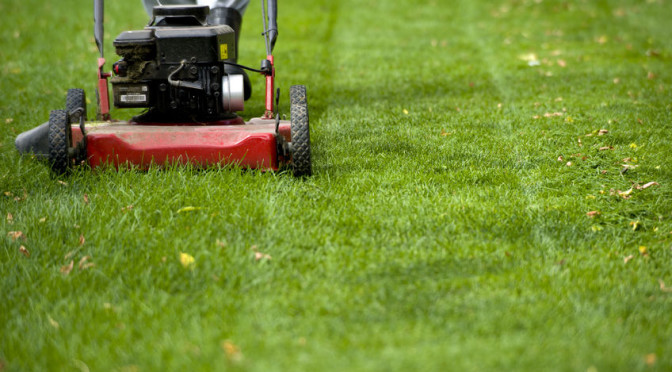Month by month Lawn care and maintenance
January
Very little to be done, brush away fallen leaves. If you haven’t already prepared in December the ground that is to be turfed or seeded in Spring then do it now. Dig the area one spit deep, remove large stones and perennial weeds, and add as much humus-making material as you can spare. Do not lime.
February
Spring cleaning, rake up dead undergrowth with a spring-tined rake.
March
Down to work. After the frost, lightly roll when the surface is dry. As soon as the ground and weather are suitable, ‘top’ the grass with the mower blades set high. Worms are now active, and a worm killer should be used. If the ground is hard and bare patches are present, spike the surface to about 4 inches with a garden fork. Rock the garden fork to and fro, and repeat every 6-9 inches.
Brush in a mixture of sand and peat or sand and Bio Humus. This is your last chance to prepare the ground for sowing grass seed next month.
Dig the area one spit deep, remove large stones and perennial weeds, and add as much humus-making material as you can spare. Do not lime.
April
The seed mowing month, mow as often as necessary to keep the grass neat and trim. The grass should not be cut closer than half an inch from the ground. Irregular close mowing will ruin your lawn. A dressing of Lawn Sand should be applied to stimulate the new growth of the grass and to control moss and several other important weeds. Rake the lawn to keep the grass healthy, to remove dead moss and to help to control clover. Finish off seedbed. Add bone meal, tread, rake and level until a fine crumbly surface is produced. It is often a good plan to spread a half-inch layer of vermiculite, such as Collite, over the area to be sown, and rake it into the top 3-4 inches. Sow the grass seed, cover with dry soil and firm the surface.
May
The time to weed & feed. Continue mowing. The lawn should now be fed with lawn fertilizer and treated with a lawn weed killer or use an all in one weed and feed product. The new lawn should have its first cut when the grass seedlings are 2-3 inches high. Set the mower blades as high as possible, and make sure the blades are sharp.
June
Mow and mow. If the weather is very dry, mow less often and leave off the grass box. If you decide to water the grass, really soak it. For isolated deep-rooted weeds, spot treat with weed killer.
July
Mow and mow. If persistent weeds are present, treat the area with weed & feed or Lawn sand.
August
Mow and mow. This is the last chance to prepare the ground for sowing seed or turfing next month.
September
The make and end month. Carry on mowing as often as necessary. Apply Lawn Sand for clover control and a worm killer to keep away casts. Seed sowing and the laying of turf should be carried out this month. Final preparation of the new lawn area should be carried out. (see April notes)
If hollows or bumps are found, gently cut and roll back the turf, add or remove soil as necessary and then replace grass. Reseed any bare patches on the lawn.
October
Getting ready for winter. Continue mowing as long as the weather remains favourable. Aerate the soil by spiking (see March notes). Brush or rake in a dressing of bone meal & sand. Lightly mow newly-sown or newly laid grass, if weather is fine ( see May notes).
November
Little to do in November, mow once if the weather is not frosty or wet. Brush up leaves and put them on the compost heap.
December
A Slack end to a busy year. Mow once if the weather remains favourable (neither frosty or very wet), and then send mower to be overhauled or if you can manage, do it yourself. Brush up fallen leaves. Areas to be sown or turfed in April should be under cultivation. If the weather is mild dig the area one spit deep, remove large stones and perennial weeds, and add as much humus-making material as you can spare. Do not lime.

